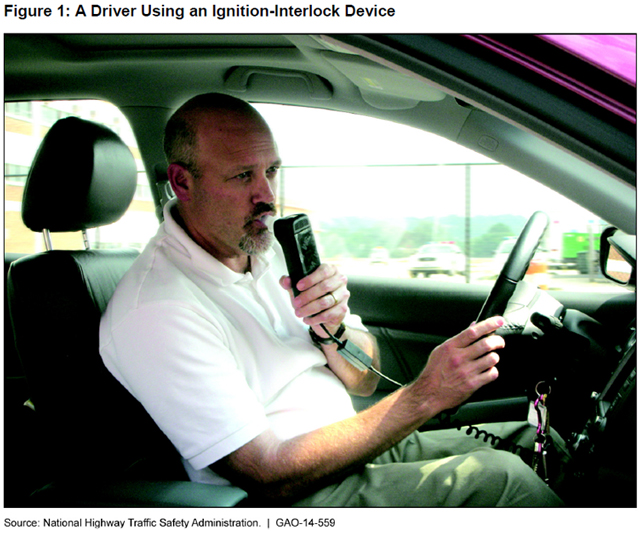Keeping Alcohol Out of the Driver’s Seat—Ignition Interlocks
In 2012, more than 10,000 people died in motor vehicle crashes involving alcohol-impaired drivers. While these types of fatalities have dropped over the last decade, almost a third of all traffic fatalities in that time involved alcohol. As we’ve reported, installing “ignition interlocks” in the cars of those convicted of drunk driving is one tool in the quest for safer roads. For Alcohol Awareness Month, today’s WatchBlog explores these devices.
What Are Ignition Interlocks?
The systems in use have 4 basic elements, all installed in the vehicle:
- A breath alcohol sensor that records the driver’s blood alcohol concentration (BAC) and prevents the car from starting if the BAC registers higher than the predetermined limit, typically .02 or .025 (the legal limit is .08);
- A retest system that requires the driver to submit breath samples at random times to ensure that the driver does not drink alcohol after the engine has been started;
- A tamper-proof system for mounting the part of the device that prevents the engine from starting; and
- A data-recording system that logs
- the BAC results (for the initial test and retests) each time the vehicle is turned on and off,
- the time and mileage for which the vehicle was driven, and
- other data that state authorities may use to monitor the offender’s behavior.
Below is an example of a driver using an ignition interlock device.
(Excerpted from GAO-14-559)
Are Ignition Interlocks Widely Used?
All states have laws allowing or requiring the use of interlocks, but states’ programs vary. For example,
- some states impose interlock-restricted driving on all convicted offenders, while others require it only for those with multiple or high BAC convictions; and
- some states use the criminal justice system to run their programs, while others rely on the driver licensing system.
Getting driving while intoxicated (DWI) offenders to install the locks is challenging. Some researchers estimate that few DWI offenders ordered to install an ignition interlock—10 percent or less—do so. According to state officials, this may be due in part to limited follow-up and monitoring. However, research shows that interlocks are effective when installed, and suggests that offering an interlock as an alternative to jail or house arrest, or requiring one for license reinstatement, could encourage installation.
Historically, Congress has provided funds for state programs to reduce alcohol-impaired driving. For example, the 2012 Surface Transportation Reauthorization Act included funding for a new grant program for states that mandate all drivers convicted of DWI only be allowed to drive vehicles equipped with an ignition interlock.
Interested in more road safety issues? Check out our reviews of motorcycle and teen driver safety.
- Questions on the content of this post? Contact Susan Fleming at flemings@gao.gov.
- Comments on GAO’s WatchBlog? Contact blog@gao.gov.






